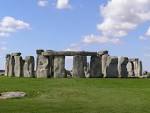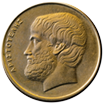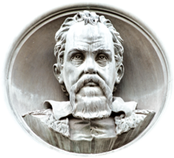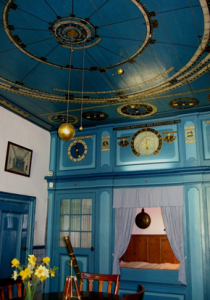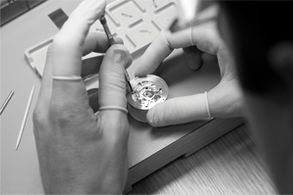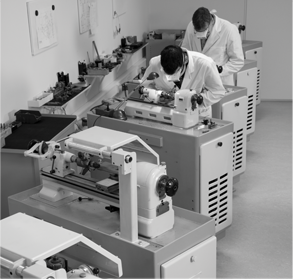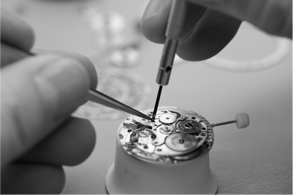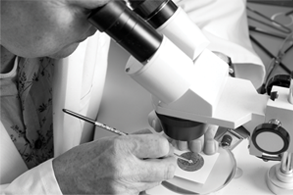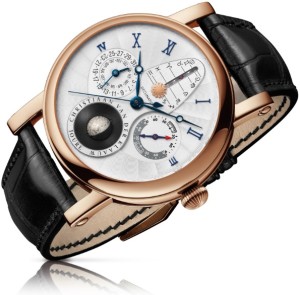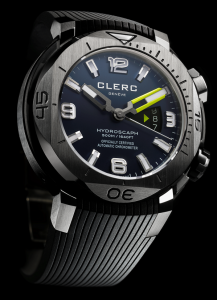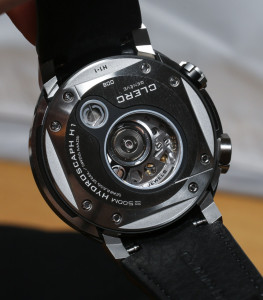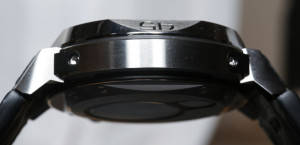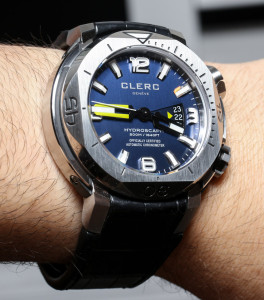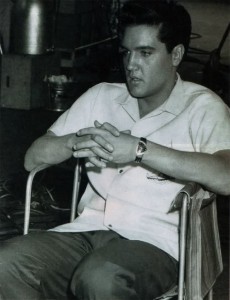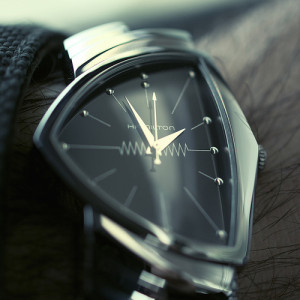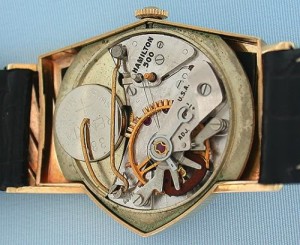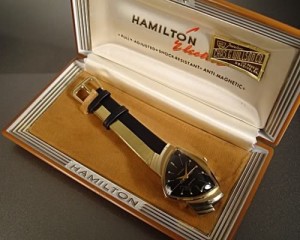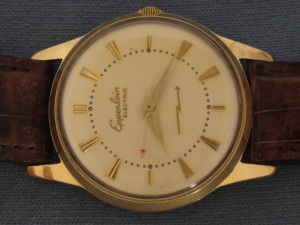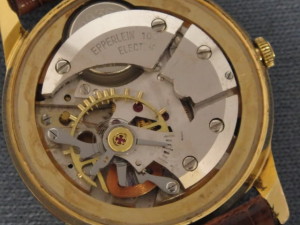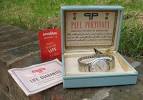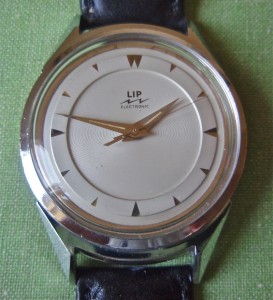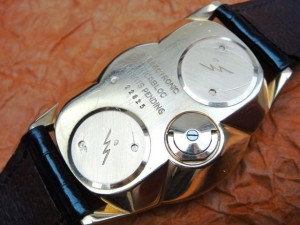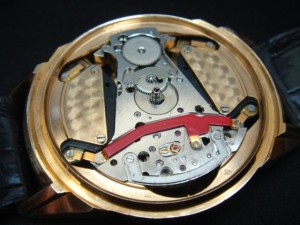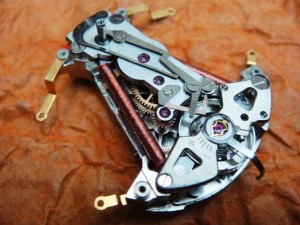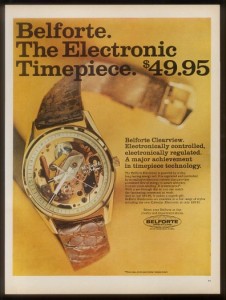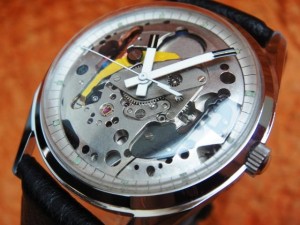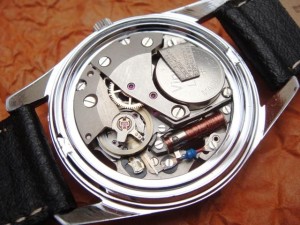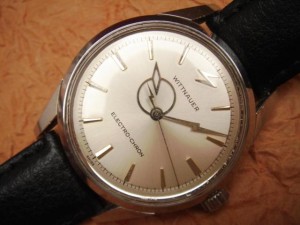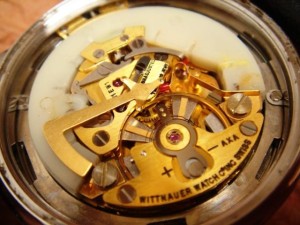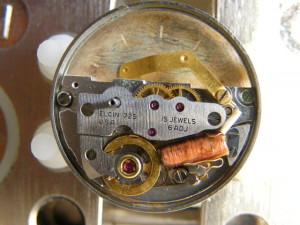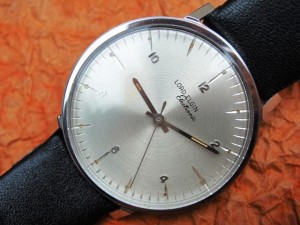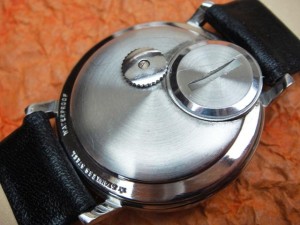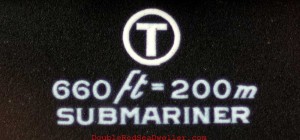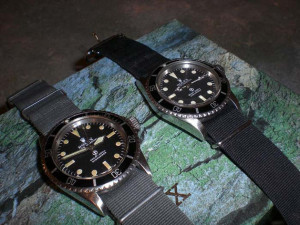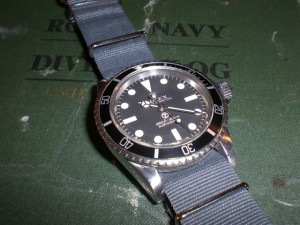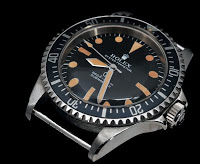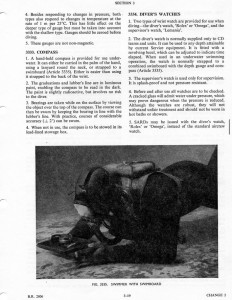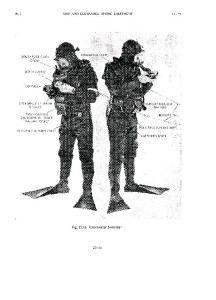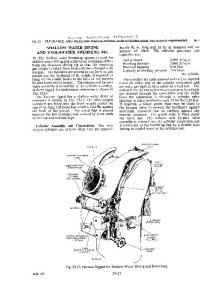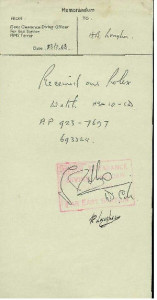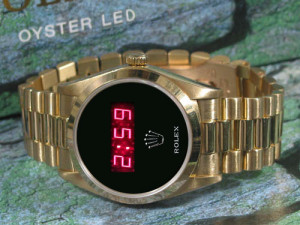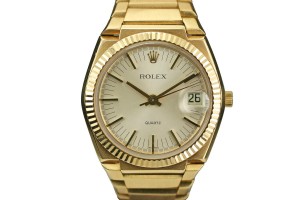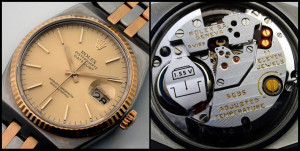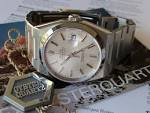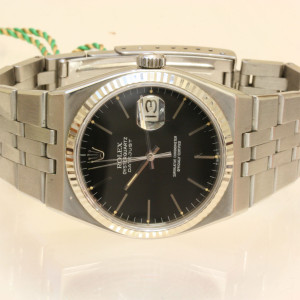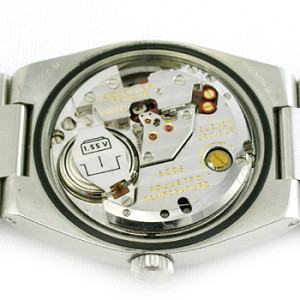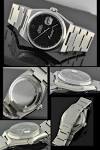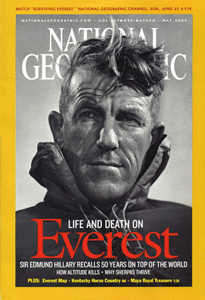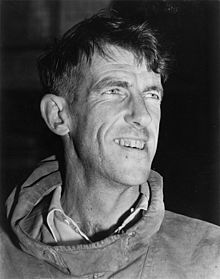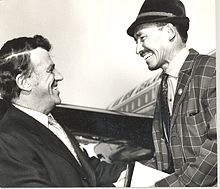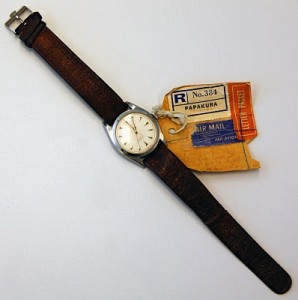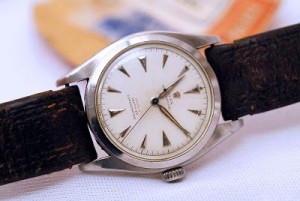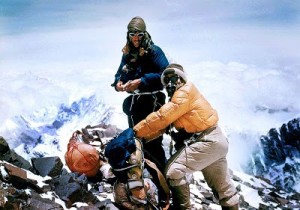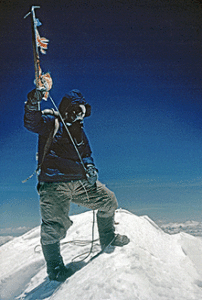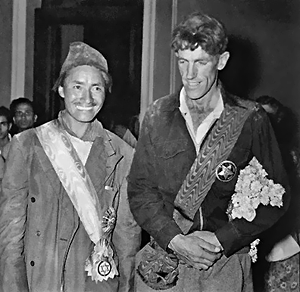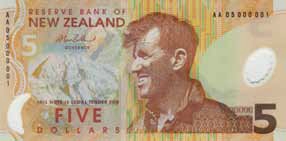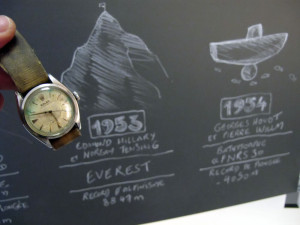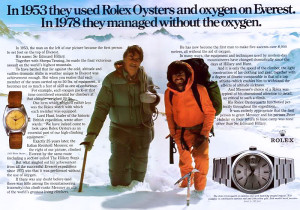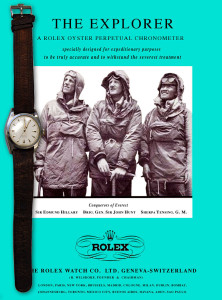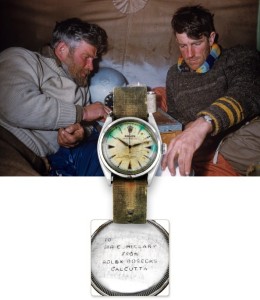Christiaan van der Klaauw: time and her planets
Time is something slippery.
Our life finds itself between past and future in the ‘now’ but it is impossible to define this ‘now’. Everything we experience in life is made up of an apparently indefinite number of ‘nows’ and, to say the least, it is remarkable that the building blocks that lead us from birth to death are slippery.
According to the special relativity theory of Einstein it is even so that time can accelerate and slow down. This because the only constant factor is the speed of light (300,000 km/s) which makes everything else, including time, relative.
To increase the unimaginable of our existence even further, it is interesting to determine from which all matter, including the human body, is constructed. Most obvious and in itself also correct answer is molecules and atoms. But then you only have reached the level of bricks and cells. The base consists of Stardust, a collection of extremely small particles (leptons, quarks, bosons), which comes from stars that already dozens of billions of years ago are extinguished. This kind of particles have very different laws (the standard model of particle physics) according to which they exist than Newton’s laws and with the recent discovery of the Higgs particle is a big part of the puzzle solved (where not all scientists are equally happy with it).
Nijehaske in Friesland (NL). The sun rises, low-hanging mist over the meadows and ripe in the trees. The start of a new day for watch manufacturer Christiaan van der Klaauw Astronomical Watches whose namesake already since 1974 makes high-quality timepieces.Today, Christiaan van der Klaauw are no longer just on his own. Next to him, there are three partners and at least 3 watchmakers and instrument makers. Christiaan van der Klaauw makes about 200 watches per year and has 10 outlets in Netherlands and 10 international. The aim for the future is a production of at least 1000 per year and 50 sales points.
As Christiaan van der Klaauw already early in his career was fascinated by time and space, it is worthwhile to us first to delve into the history of astronomy.
INSPIRED BY THE STARS
Astronomy is one of the oldest sciences in the world. One of the oldest astronomical structures, dating back to prehistoric times, can be found in England. The way in which the stones of ‘Stonehenge’ are positioned corresponds with the position of the stars. Some astronomers even think that people could predict eclipses of the Sun and the Moon by means of the Stonehenge.
In ancient China, Egypt and the Babylonian Empire, people were also involved in the first forms of astronomy, in the form of calendar calculation and astrology. Time and timekeeping have played an important role in ancient China, as is evidenced by the waterclock, which was invented more than 2500 years ago in China, and was used for astronomic and astrological ends.
In the Egyptian civilisation, we see many references to celestial bodies. The pyramids of Gizeh represent part of the constellation of Orion according to some prominent scientists. In Greek Antiquity, many important constellations were described, and many theories were developed. They distinguished, for example, seven moving celestial bodies: Moon, Mars, Mercury, Jupiter, Venus, Saturn and the Sun. To this we owe our seven-day week.
Greek astronomers who made an important contribution to science were, amongst others: Thales of Miletus, who was the first to predict an eclipse of the Sun. The famous Pythagoras, who not only produced his world-famous theorem, but also, like Aristotle, argued that the Earth was spherical. Ptolemy, deviser of the geocentric system, which assumes that the Earth is the centre of the universe, and the Sun and other planets revolve around the Earth.
In the period that followed, Arabs and Persians made an important contribution to the development of astronomy. In particular in the period from the 8th to the 13th century, many theories were formed and described in the Middle East. The scientist Al Battani, for instance, explained the theoretical foundations of the Astrolabe in his writings. In Baghdad there was the so-called House of Wisdom. Various astronomers, such as Al-Chwarizmi and Thabit ibn Qurra worked from this place, and their discoveries meant an enrichment of astronomy.
In the 16th century, Copernicus tried to get rid of the inaccuracies of the geocentric system, and developed a new theory. He advanced the thesis that not the Earth, but the Sun was in the centre, and that the planets, amongst which the Earth, revolved around the Sun. This theory is known as heliocentrism. Two well-known astronomers who supported Copernicus’ theory were Galileo Galilei and Johannes Kepler. Galileo Galilei mainly owes his fame to being one of the first to use a telescope for studying the universe. An interesting detail is that the telescope was a Dutch invention. A century after this, Isaac Newton was the first astronomer to link mathematical and physical models to astronomy.
The famous Dutch mathematician, physician and astronomer Christiaan Huygens was a contemporary of Isaac Newton. This source of inspiration to Christiaan van der Klaauw was an all-round scientist with countless discoveries (e.g. Orion nebula and the true nature of the ring of Saturn) and inventions to his name. He became mainly known for his knowledge in the field of astronomy and time observation. Astronomy and orientation at sea required accurate time measurements. Huygens applied himself to this problem and developed instruments with which time could be measured very accurately. In 1656 he invented the pendulum clock, which was patented on 16 June 1657. In his work ‘Horologium Oscillatorium sive de motu pendulorum’ (1673) he described the theory of movement of a pendulum.
Approximately 100 years later, the Dutch-Frisian astronomer Eise Eisinga continued the work of Huygens. Eise Eisinga was of humble origin and highly talented. At the age of 15, he published a mathematics book of over 600 pages. When he was 17, he published a book on the basics of astronomy. He reached his legendary status when a conjunction of the Moon and the planets Mercury, Venus, Mars and Jupiter was to occur. A Dutch-Frisian dignitary, whose opinion was held in high esteem, predicted that these celestial bodies would collide with one another on 8 May 1774. As a result, the Earth would be thrown out of its orbit and would burn in the Sun. This prediction caused an enormous panic in Friesland. In order to demonstrate that there was no reason for panic, Eisinga built a scale model of our solar system in his living-room. A time-piece built in the attic regulated the orbital times of the planets known at the time. In this way, Eisinga could prove that the celestial bodies revolve around the Sun according to fixed patterns.
To this very day, the Eise Eisinga Planetarium is still intact, which makes it the oldest working planetarium in the world. The Eise Eisinga Planetarium has meanwhile been transformed into a museum where various historical astronomical instruments are on display. In 1997 the Eise Eisinga Planetarium was fully restored. The restoration was supervised by the prominent astronomer Hans Noordmans. Hans Noordmans is also involved in the development of Christiaan van der Klaauw Astronomical Watches in an advising role. In recognition of what he has meant to (Frisian) astronomy, Christiaan van der Klaauw Astronomical Watches will soon present the ‘Astrolabium Hans Noordmans’.
One of the eye-catchers of the museum is a clock made by Christiaan van der Klaauw. With this clock and also the smallest planetarium in the world in one of his watches, Christiaan van der Klaauw carries on the tradition of the Frisian astronomy.
Christiaan van der Klaauw Astronomical Watches now
When visiting the work sites and workshops of Christiaan van der Klaauw you instantly notice serenity and passion for timepieces of the employees. Three watchmakers build each watch by hand and use the best materials and methods to do this.
The basis for the watches are formed by movements of high quality Swiss manufacturers. These are adapted and modified to meet the high demands Christiaan van der Klaauw presents to his watches. A part of the parts is purchased in Switzerland and a part is itself manufactured. Making meticulous components such as cogs, is manual work because there are no machines that have the accuracy a human hand has. In contrast, the high-tech computers with CAD/CAM programs that allow designs to be made in 3D and with which the information can be captured to steer the different machines.
The case of every Christiaan van der Klaauw watch consists of a solid piece (precious) metal with a thickness of 14 mm. The three types of metals used are Platinum, gold and high-quality stainless steel. Platinum is the rarest and therefore the most expensive; In addition, it is nearly three times heavier than steel (specific gravity Platinum is 21.5 g/cm3 versus steel 7.8 g/cm3). For the golden cases rose gold is used and the steel used for the cases is extremely hard and of the same quality as steel used in the medical field. Literally everything that is used to build a Christiaan van der Klaauw watch should meet the highest requirements. This applies to the leather strap but also for the oil that is used in the movement
A good example to illustrate what Christiaan van der Klaauw watches stand for is the Real Moon 1980.
The watch is available in steel, rose gold and white gold. There is also a limited edition of 8 pieces in Platinum. Most striking is the Moon, a ball with a diameter of 5 mm, which is located on ‘ 6 ‘ h. On ‘ 12 ‘ hour one can see the logo of Christiaan van der Klaauw, the 12-armed Sun. On the positions ‘ 3 ‘ and ‘ 9 ‘ two small dials catch your attention. The Moon gives the current moon phase by rotating. The Moon rotates in 29 days, 12 hours and 44 minutes (29, 53058885 days) around the Earth. The complication in the Real Moon 1980 has a deviation of only 1 day in 5400 years.
The logo on the ‘ 12 ‘ position gives the height of the Sun in relation to the horizon. The axis of the rotating earth is slanted in her position to the sun. This principle is called declination and means that in places where the Earth is tilted toward the Sun, there is summer. Tilted away from the sun there is winter. The 3 hour position is reserved for the Eclipse pointer. If the Eclipse pointer is within the indication stripes somewhere on Earth there is a solar or Lunar Eclipse. Finally the 9 hour position. There can be read off the month and date. The dial is not the only thing that is worth looking at in Christiaan van der Klaauw watch. Through the sapphire glass back you can admire the beautifully hand-engraved rotor; This work of art is created by Jochen Benzinger.
Christiaan van der Klaauw astronomical watches are dazzlingly beautiful and all have an astronomical basis. With such a watch you really have something special and rare to your wrist. It is well worth looking at the whole collection Christiaan van der Klaauw Astronomical Watches and endulge yourself in the product of pure watch lovers.
Jaap Bakker
